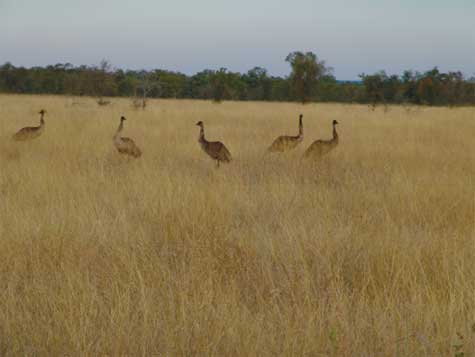Getting chased out of the water by an immense ray at Australia’s most famous beach was just another day at work for Eugene Tan.

Photo Review Stories section

Getting chased out of the water by an immense ray at Australia’s most famous beach was just another day at work for Eugene Tan.

Few people have photographed Australia’s magnificent Kimberley region as intimately as former wildlife officer Russell Guø©ho.

Julia Margaret Cameron is an extraordinary figure. Her images, while clearly of the time, nevertheless have a mysteriously modern feel. Almost alone among photographers of the day, she seems to have somehow grasped the essence of the new medium. Again and again she managed to capture the ever elusive decisive moment. And she did so with what would now be regarded as an intolerably clumsy set of tools.

Literally speaking, Kane Hibberd has a sound basis for breaking into the highly competitive field of rock music photography. ‘Until four years ago I was a sound engineer, recording bands in the studio and mixing live concerts, but I decided to get out because it wasn’t satisfying my creative urge,’ says the Melbourne-based 31-year-old. ‘I’d always had an interest in photography and thought that if I worked hard and was my own harshest critic, I might be able to make a go of it.

‘At 4.30 or 5am there’s enough light to see what’s going on and not too many deep shadows,’ says photographer Andrew Bell, sweeping his hand across an imposing image that looks at first glance like some immense, ancient temple. A tiny figure emerges from a door and another stands high above, looking down from the edge of the monumental structure. They seem to be part of some sort of mysterious tableau.

Melbourne’s Morganna Magee is too busy documenting happenings on her doorstep to worry about global warnings that photojournalism is going out of fashion.

In the history of photography, and more particularly, in the history of American photography, Alfred Stieglitz looms large. Born in 1864, a year or so before the American Civil war ended, Stieglitz died not long after the atom bombs ended World War II. When he was a boy growing up in Hoboken, New Jersey, photography was a complex and even dangerous art. The Daguerreotype was just giving way to the tintype and roll film wouldn’t be invented for another 20 years. But, by the time he died, colour film was an established technology and photography itself had been a medium of the masses for 50 years.

Adam Bruzzone loves the vigorous light and strong colours of his native South Australia but, thanks perhaps in part to his heritage, he is equally passionate about the sublime and dramatic landscapes he’s come to know on visits to Italy.

It’s only taken Adam Pretty about a decade to reach the top of his field . Like so many photographers, he discovered his vocation while still in high school. ‘Stumbled on it’ might perhaps be a better way of describing what happened. After receiving an unexpected windfall, he bought a camera on a whim.

Tim Hixson settles back into a comfortable couch at one end of his small office. Softly spoken and easy-going, there is nevertheless a certain containment and intensity in his manner.
Ads can be a pain, but they are our only way to maintain the server. Please deactive Ads blocker to read the content. Your co-operation is highly appreciated and we hope our service can be worth it.